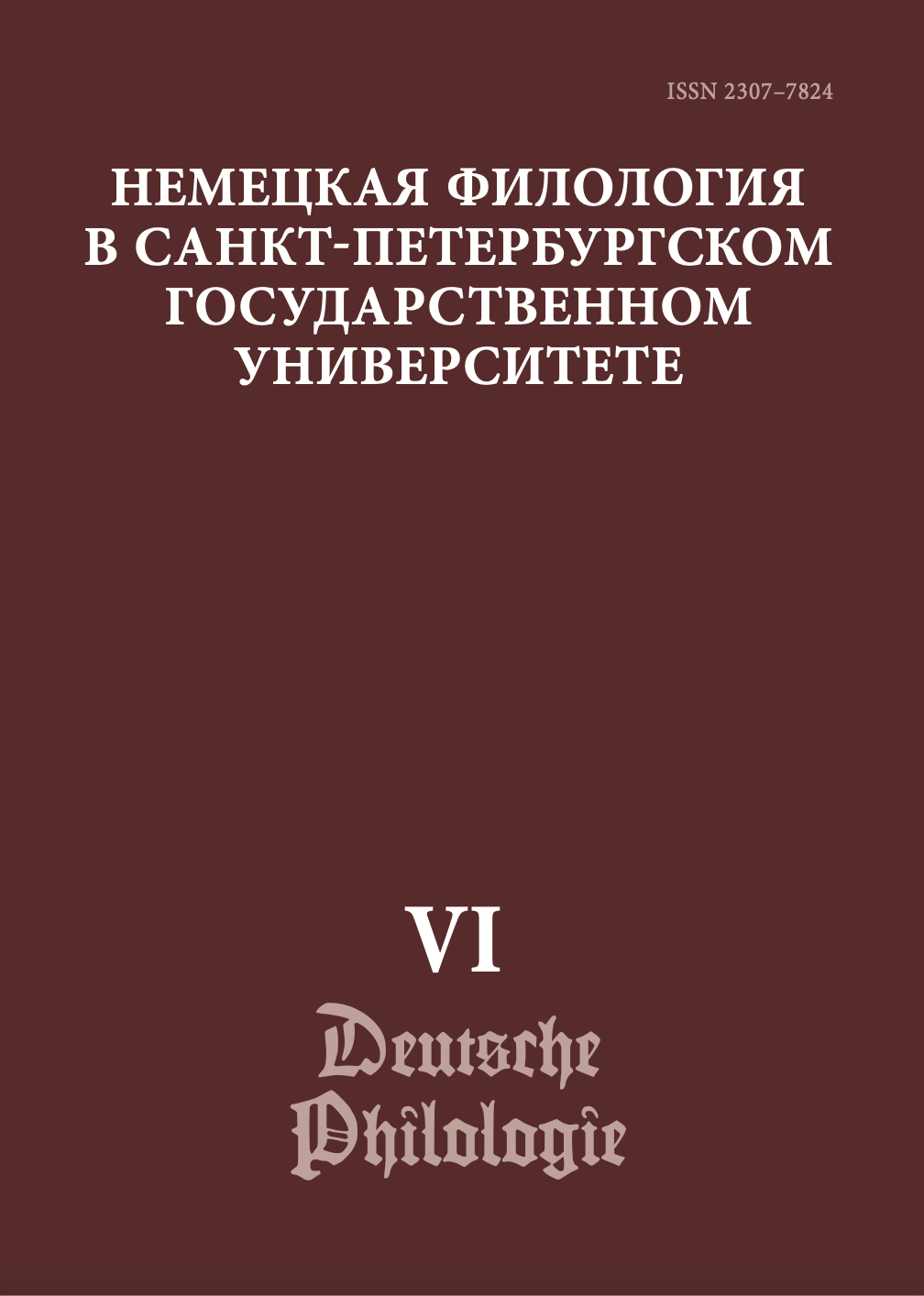FORMULAIC WAY TO INTRODUCE DIRECT SPEECH IN MIDDLE GERMAN LITERATURE
Abstract
The paper analyses formulaic ways of introducing the direct speech of a character, typical for different genres of literature in middle german period, and identifies communicative and pragmatic potential of the constructions used to introduce the communication of character, and given with their position related to the direct speech and role of the components, specifying the nature and the focus of the speech act.
Keywords:
direct, speech, formula, verba dicendi, speech communication, inquit-formulas
Downloads
References
Литература
References
Downloads
Published
How to Cite
Issue
Section
License
Условия передачи авторских прав на статьи и рецензии, опубликованные в ежегодном периодическом издании «Немецкая филология» регулируются условиями Лицензионного Договора автора с Санкт-Петербургским государственным университетом. В соответствии с Лицензионным Договором опубликованные материалы находятся в открытом доступе, а авторам бесплатно предоставляется неограниченные возможности их распространения и самостоятельного архивирования.




